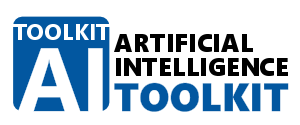VoiceData
VoiceData can be used for generating data for training Automatic Speech Recognition (ASR) models. The generated data includes both with the transcription synchronized audio (the input text is read by a machine trained very human sounding synthethized voice; male or female) and transcription files for training ASR models in several languages by using any text you desire. VoiceData has a special multiprocessor/core support which makes the toolkit much faster especially when processing several audio files or images at once.
VoiceData is Microsoft Windows 64bit compatible (Windows 7, 8, 10 and above).
VoiceData is Microsoft Windows 64bit compatible (Windows 7, 8, 10 and above).
Download: VoiceData (free for non-commercial use).
Export ASR Data (audio & transcriptions)
Use the built-in text normalization (see next section) or enter or copy/paste the normalized text into the Normalized Text editor. As next choose the desired speaker/language in the sidebar's Speech tab and use the 'Export Normalized Audio & Transcriptions' command to export the audio and the accompanying text transcriptions. The exported audio and text transciption files will be saved into the 'exportdata'/langid directory (where langid is the two letter language code) under the program directory.
The normalized Text must contain each sentence on a new line. The normalization module will do this automatically but if you enter the text yourself then make sure that each sentence is on a new line! Do not use very long sentences because that may decrease the accuracy of the ASR later.
Text Normalization
VoiceData text normalization is based on Sparrowhawk/Kestrel, the Google-internal TTS text normalization system reported in Ebden and Sproat (2014). Copyright 2015 and onwards Google, Inc., Apache 2.0 http://www.apache.org/licenses/LICENSE-2.0, Sparrowhawk on GitHub: https://github.com/google/sparrowhawk
The first step in ASR data generation is to normalize the input text. Normalization means that all non text elements (e.g. 1/1/2018 or 10.5kg) must be converted to text. This is a complex task because the normalization must use language dependent grammar definitions in order to be able to detect and normalize such elements automatically. You may also decide to provide the normalized text directly.
Learn more about the VoiceData text normalization and the grammar definition format from the free book 'VoiceData Text Normalization'. The preface to the book is written by Richard Sproat (Research & Machine Intelligence, Google, New York). The book contains an extensive explanation about how to develop language dependent grammars and about many related subjects together with a lot of examples. It is recommended to read the book before using the software.
VoiceData contains grammar definitions for two languages English and Dutch. You can develop your own grammars for any language with the help of the built in GrammarEditor (Grammar menu). You can even replace the distributed English and Dutch grammars by replacing the language directories with your own files. Please read the free book VoiceData Text Normalization for more information and examples.
AI Text Synthesizer/Speaker
The synthesizer can read the text present in the Normalized Text editor in several languages. You can also load, copy/paste or type text in the editor and listen through the computer speakers. You can select the languages/voices on the Sidebar's Speech tab. You can also install other languages/voices. You can operate the synthesizer from the Speech command center on the Sidebar's Speech tab.
You can also adjust the volume, the rate of speech, you can start, pause, resume and even save the speech in an audio file which you can use to listen to the text later on your computer or on an other device (Smartphone, MP3-player, etc.). You can easily convert the saved WAV file to any other audio format by using the AI-TOOLKIT AudioEditor.

| Learn about the application of Artificial Intelligence and Machine Learning from the book "The Application of Artificial Intelligence | Step-by-Step Guide from Beginner to Expert", Springer 2020 (~400 pages) (ISBN 978-3-030-60031-0). Unique, understandable view of machine learning using many practical examples. Introduces AI-TOOLKIT, freely available software that allows the reader to test and study the examples in the book. No programming or scripting skills needed! Suitable for self-study by professionals, also useful as a supplementary resource for advanced undergraduate and graduate courses on AI. More information can be found at the Springer website: Springer book: The Application of Artificial Intelligence. |
 |










